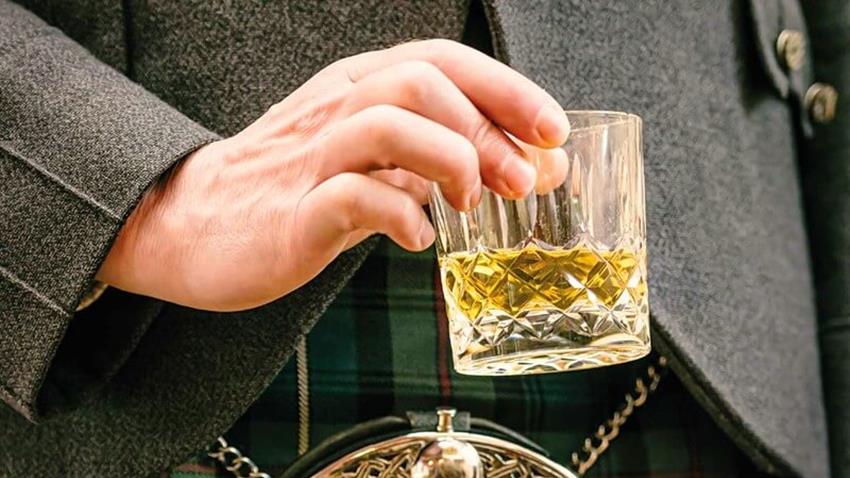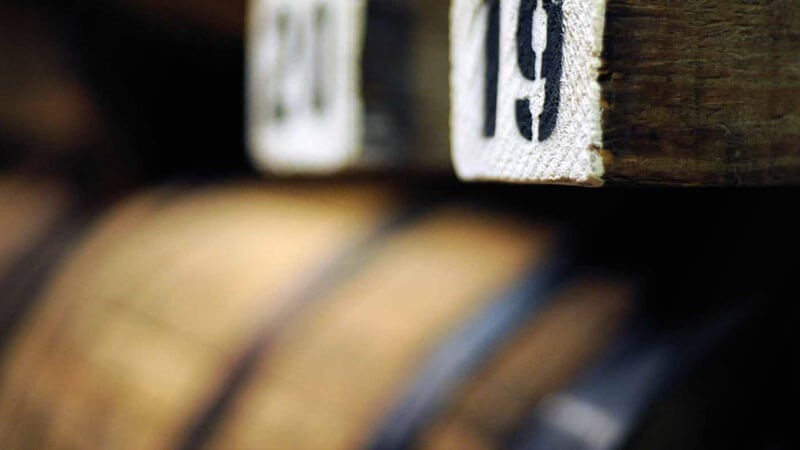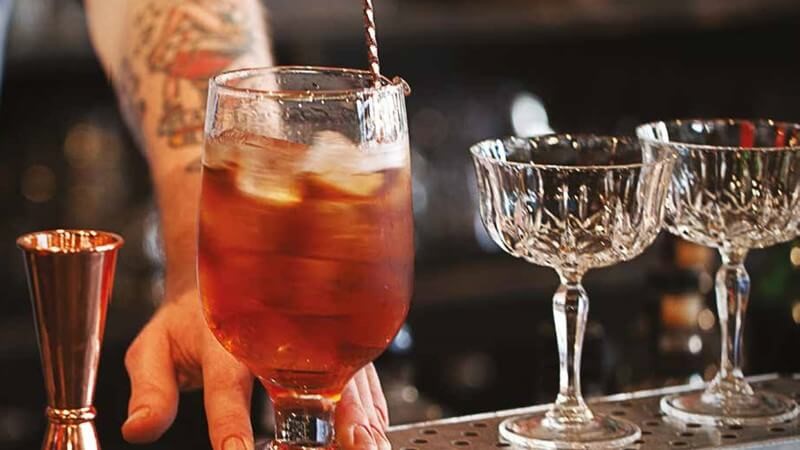
Distilled in Scotland for hundreds of years, Scotch whisky dates as far back as 1494. Many scholars agree that it was Irish Monks that brought the knowledge of distillation over to Scotland, originally using the distilled spirits for medical purposes.
Incredibly harsh and often flavoured with herbs and spices, these early spirits wouldn’t legally be allowed to be called whisky if made today. A tax was added in 1644 leading to an unlicensed trade of whisky within the highlands which formed a significant part of the regions export economy. It wasn’t until the late 18th century when Scottish whisky stopped being solely a locally consumed spirit and started to be exported to England.
Since then, Scottish whisky has been enamoured with a gleaming reputation, known for its quality and as a symbol of luxury. 41% of the UK drinks whisky*, exports are booming and the market is being re-invigorated with modern and unconventional brands and marketing activities. To investigate the Scotch market further and uncover what licensees can do to grow whisky sales we’ve spoken to some of the industry’s biggest names; from Johnnie Walker, Brand Ambassador and 2015 Diageo world Class winner Ali Reynolds, from Famous Grouse, Whisky Ambassador Joe Ellis, Auchentoshan’s Teddy Joseph and Monkey Shoulder Brand Ambassador John Wayte.

“There was a period during the late 1980’s and early 1990s where demand for Scotch whisky decreased and a number of distilleries closed” states Joe Ellis, referring to a time when Vodka exploded in popularity across the UK, which not only affected Scotch but gin and brandy too. But interest in Vodka has rescinded somewhat in recent years and now whisky is back on the up. “We’ve seen a huge resurgence [in the Scotch market] in recent years; everything is really exciting and evolving massively,” says Ali Reynolds. “The market now has shown a dramatic increase in the value of Scotch single malt”, says Joe, “2017 showed a huge growth in the luxury malt whisky category and the total export value of single malts reached £1 Billion and volume also increased too!”.
The export market is going from strength to strength “and is showing strength in all markets, in particular within North America, Asia and now South America” relays Auchentoshan’s Teddy Joseph. The weaker pound will only help exports this year.
"One of the best growth drivers has been getting David Beckham involved which makes it a bit sexy and more of a lifestyle choice to drink it”
By Ali Reynolds, Johnnie Walker
After all these years, Scotland continues to deliver fantastic products. Many new whisky products are innovative blended malts with contemporary packaging, helping to bring Scotch whisky to the younger consumer. “The market for Scotch is in a good place. The market as a whole is focusing on getting the younger crowd into drinking scotch and really driving interest among a different generation”, says Ali, “one of the best growth drivers has been getting David Beckham involved which makes it a bit sexy and more of a lifestyle choice to drink it”.
David Beckham, however, didn’t bring a luxury image to the category himself. “It’s the heritage and story behind the brands that have given Scotch whisky a connection to luxury over the years,” says Joe Ellis. Perhaps the production craft plays a part too, “the skill of master whisky blenders and the magic of ageing culminate in delivering Scotch’s outstanding qualities” notes Teddy. “I think it’s considered luxurious because it’s a drink that you get to savour, you spend time on choosing it and then you only pull it off the shelf on an occasion that you consider to be special” adds Ali.

As a symbol of the good life, sales of Scotch in the On-Trade should be rocketing right? “Licensees need to remember that for people that haven’t drunk Scotch before it can be considered quite a brutal drink if drank neat”, says Ali, “ease customers in and remind them it’s a harsh spirit made in a country with harsh conditions”. To that end, Joe Ellis notes, “cocktails are a great way of getting consumers to try a spirit, to grow whisky sales in the trade, licensees should be pushing whisky cocktails”.
“More consumers are recognising the dedication involved and as such are holding whiskies in high regard,” says Teddy, referring the need for greater whisky knowledge. In growing whisky sales “there’s a lot more to do teaching people about how it’s made, where it’s from and all the great things in between. The stories and history might be considered boring to some but when you get into the nitty-gritty it’s very interesting and there is so much more to it. It’s all made in here in the UK, in Scotland and the distilleries are some of the most beautiful places you’ll ever visit” notes Ali. It’s a sentiment echoed by Joe, “in order to grow whisky sales, I believe the most effective method is education. If licensees are educated in different flavour profiles of whisky, then they will be much more confident in recommending whiskies to their guests”.
"If licensees are educated in different flavour profiles of whisky, then they will be much more confident in recommending whiskies to their guests”
By Joe Ellis, Famous Grouse
At Matthew Clark, we know outlets that stock a wider range of whiskies, sell more whisky. Beyond an essential blended malt consider stocking a single malt from each of the regions, Highlands, Lowlands, Speyside and Islands along with a whisky ideal for cocktails and a contemporary whisky specifically targeted to a younger demographic. “Have expressions with varying degrees of age so you have something there for the consumer to trade up to”, adds Monkey Shoulder Brand Ambassador John Wayte, “your range should explore different regions of Scotland where each whisky has its own unique style”.
Finally, we come to the best bit, drinking it. “Drink it however you want to drink it, you have paid for it,” says John, something echoed by all. But if you want to improve your own knowledge of whisky and it's flavour profiles Joe Ellis has a recommendation. “When you buy a brand new bottle of whisky that you’ve not tried before, take this opportunity to really taste the whisky. This means pouring a measure into a proper whisky tasting glass, such as a Glencairn, don’t add ice/mixers and spend a good half an hour or so nosing and slowly tasting the whisky. This is the best way of building up your own bank of whisky memories and flavour profiles. You’ll be genuinely surprised by how quickly you develop your own tasting notes. After all, Scotch whisky has taken at least 3 years to make, it’d be a shame to just knock it back and not give it the respect it deserves”.

If you’re not at a stage where you can imagine being able to stomach tasting whisky neat, Ali recommends building yourself up to it. “Blended Scotch with ginger ale is perfect for those looking to see what Scotch is like, as the ginger counteracts the harsh flavours. Johnnie Walker and ginger is one of our perfect serves. After this, it would be time to move onto Scotch and soda so you can taste more flavour coming through. Finally, it’s time to try with water or on ice. When you’re confident about what you like you can explore the massive selection of Scotches for drinking neat”.
The other way to drink whisky, of course, is in cocktails. “Whisky cocktails”, says Joe, “such as a refreshing Naked Grouse Sour or a Highland Park Orcadian are great ways of introducing people to the wonderful world of whisky”. There is a huge opportunity to appeal more to general world whisk(e)y consumers, moving them from neat serves or serves with a mixer to higher margin whisky cocktail serves. The theatre of a cocktail also produces an experience that can’t be replicated at home, encouraging return visits.

